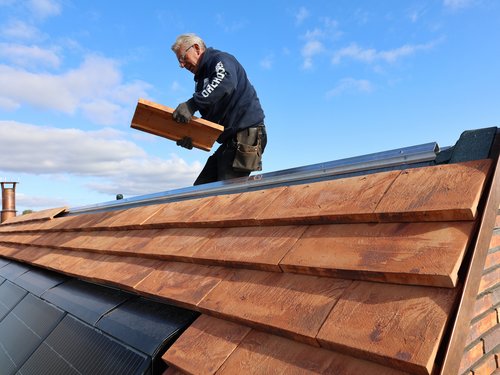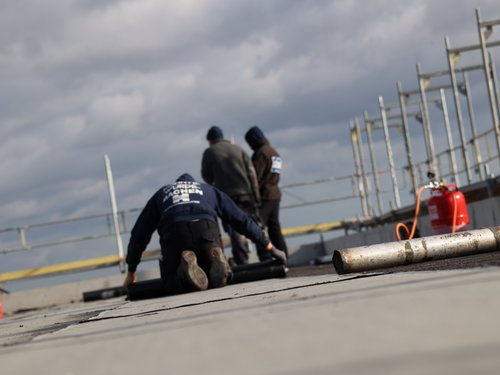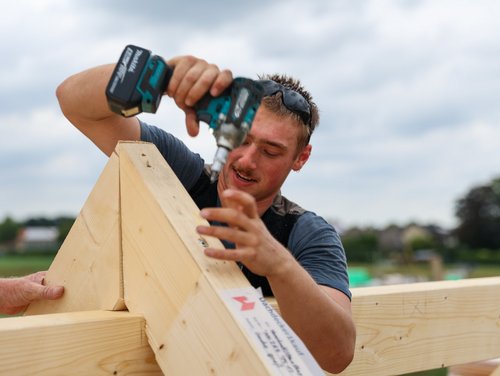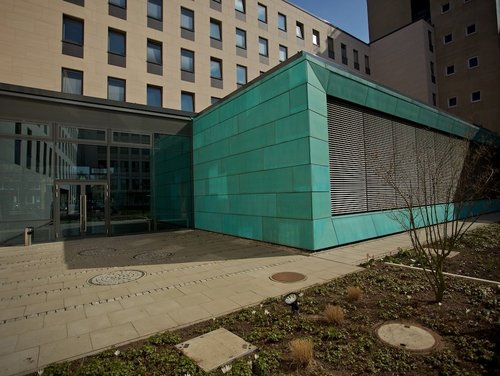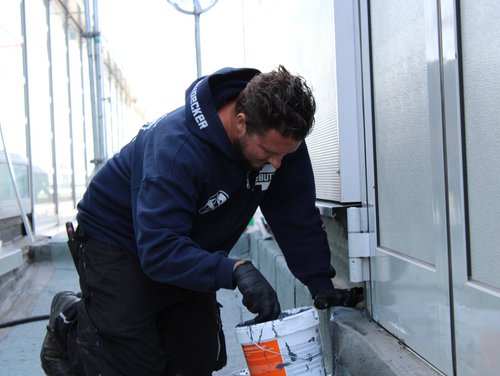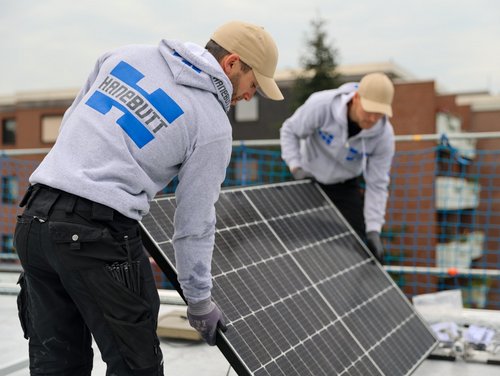
Tight allover
We love flat roofs ... do you?
Then we have something in common.
Flat roofs have been around since ancient times and Hanebutt has been working with them for over 90 years. We know the path of water like no other and know how to direct it perfectly.
Refurbishment and maintenance measures
Flat roofs are an essential component of industrial commercial buildings and modern residential complexes. Because a flat roof has structural advantages and also offers a range of additional uses. For example, your flat roof can be a sustainable green roof, a car park deck, a terrace or even serve as a surface solution for a solar system to make you energy-independent.
What all have in common, however, is the aim to protect your building from weather influences and reduce heat loss and subsequently energy costs.
Our experts locate fissures, leaks and blocked drains before your building envelope is damaged.
Implement your flat roof concept with Hanebutt
From idea to finished building.
We put the finishing touches to your building project.
For you as the owner, contractor or manager, working with Hanebutt means that we adhere to your time and budget management and do not disrupt any production processes.
Both your tenants and our friendly staff on the roof and in the administration will appreciate our considerate methods. Your employees can go about their daily work undisturbed - we develop concepts that generate a smooth workflow and liaise closely with your managers. Hanebutt works according to strict quality standards and is DIN ISO 9001 certified.
Building project with flat roof solution
A flat roof is timeless and functional.
Thanks to the short construction phase and comparatively low construction costs, you can achieve your goal particularly quickly with this solution.
Surface area is free space.
A particular advantage of a flat roof is the variety of additional utilisation options - it is often more than "just a roof". You can open up part or all of your space as additional living space and create sunny areas for relaxation and leisure by installing a roof terrace or creating a roof garden. Flat roofs offer ideal possibilities for small or unfavourably shaped plots and on sites where higher buildings are not permitted.
However, the miracle of a flat roof lies hidden.
We can advise you comprehensively on the type of insulation, ventilation, drainage and the final top layer of gravel, green roofing, asphalt, synthetics and many other materials.
You can rely on craftsmanship, a range of services across all trades, an attractive price-performance ratio and excellent workmanship.
Our roofs last.
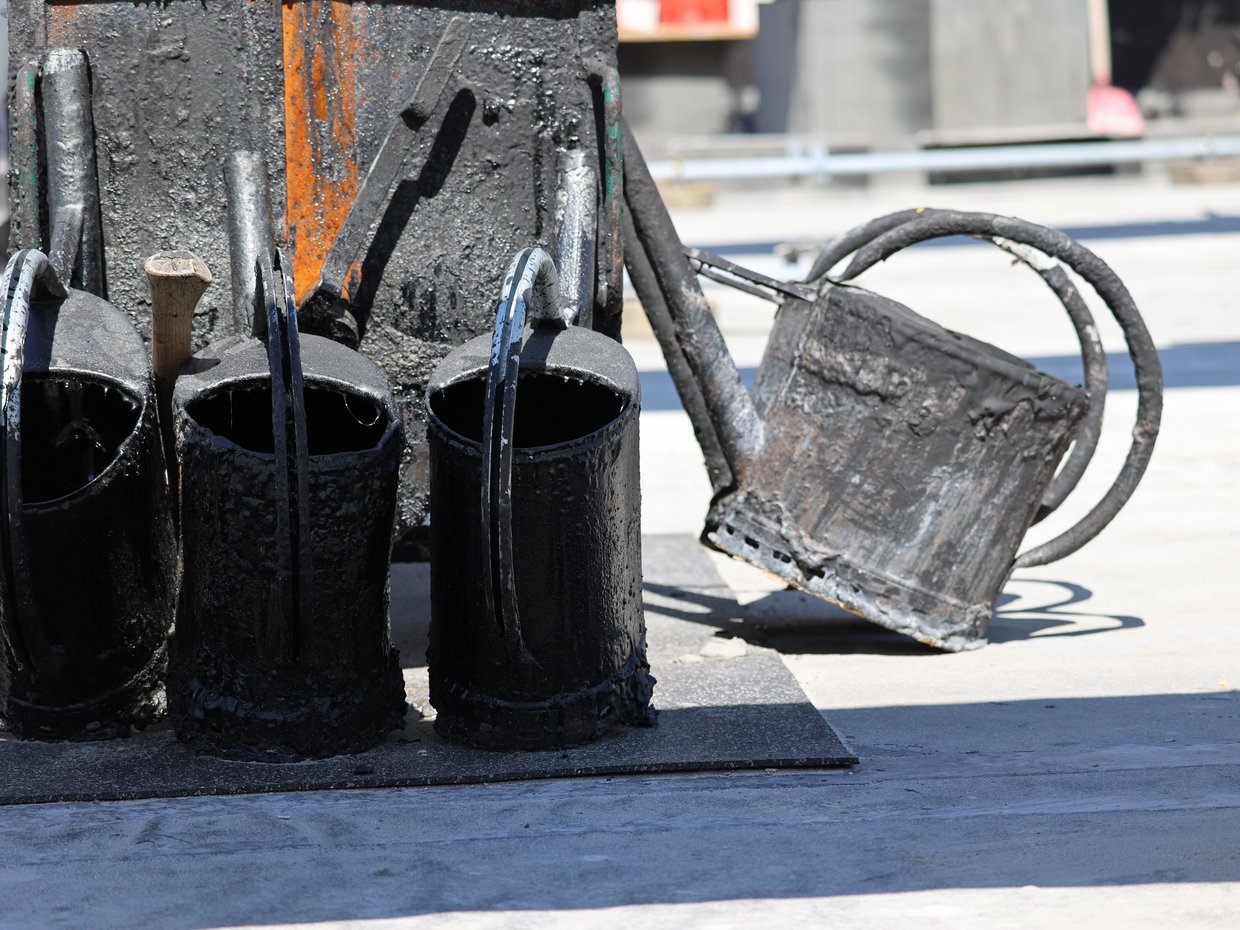
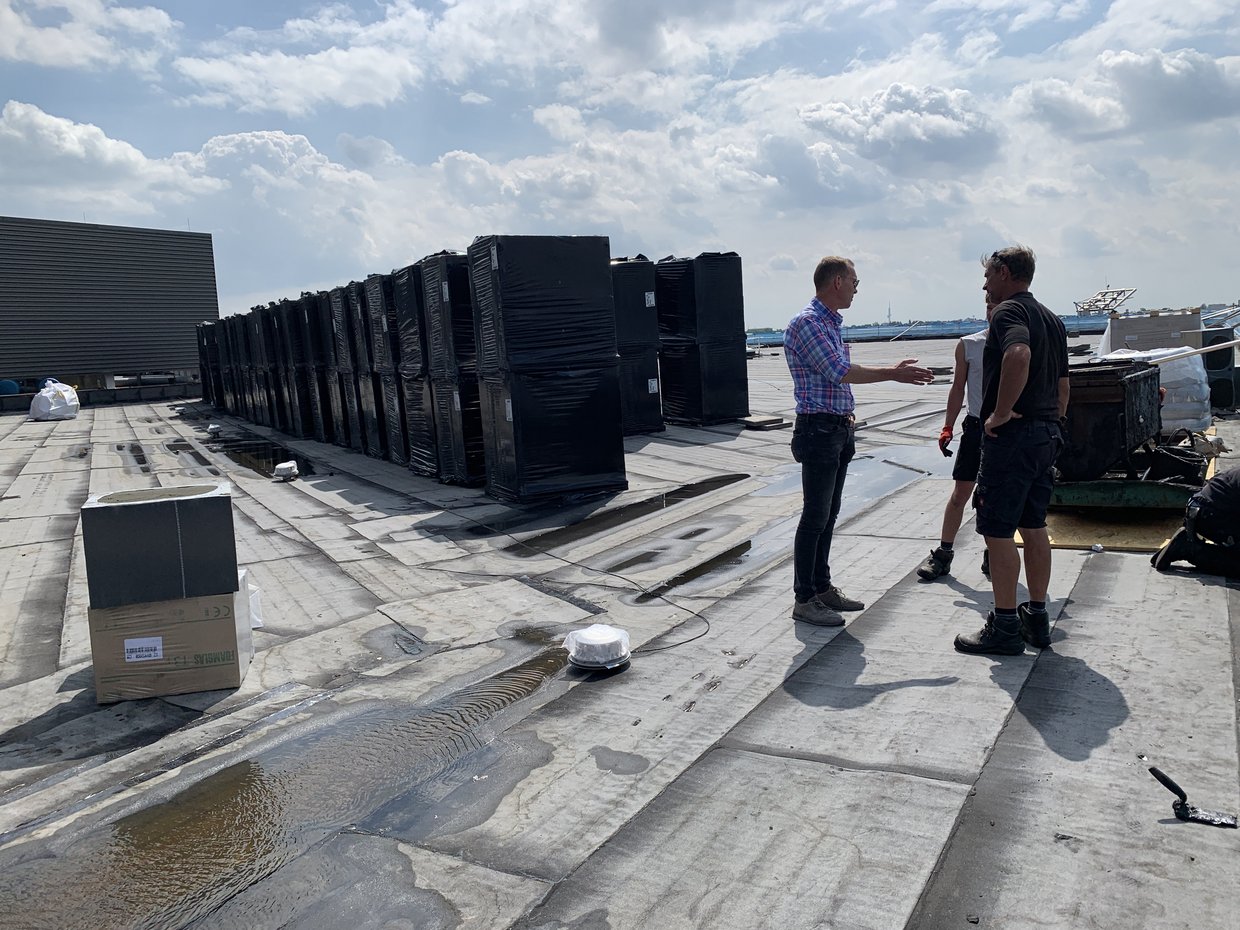
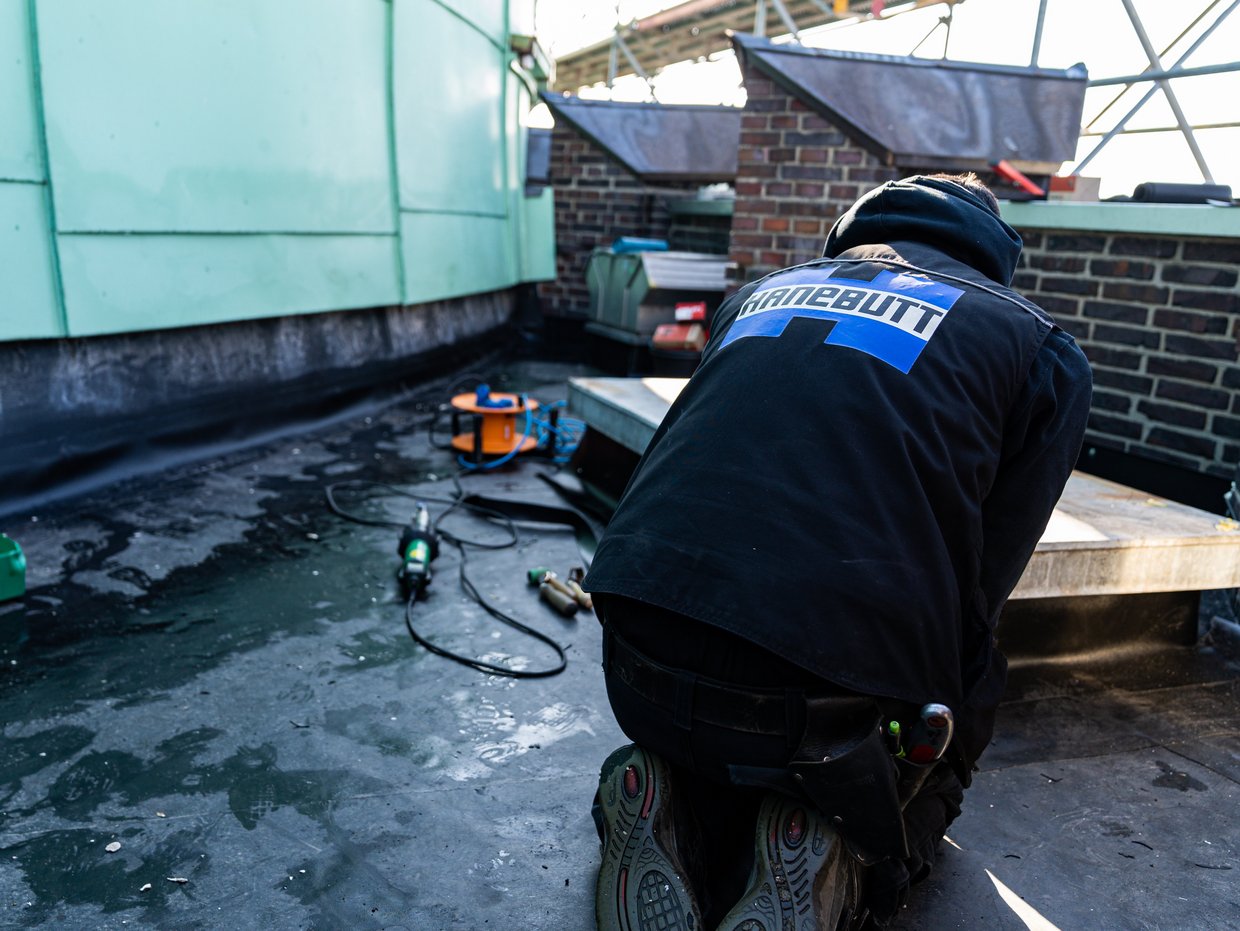

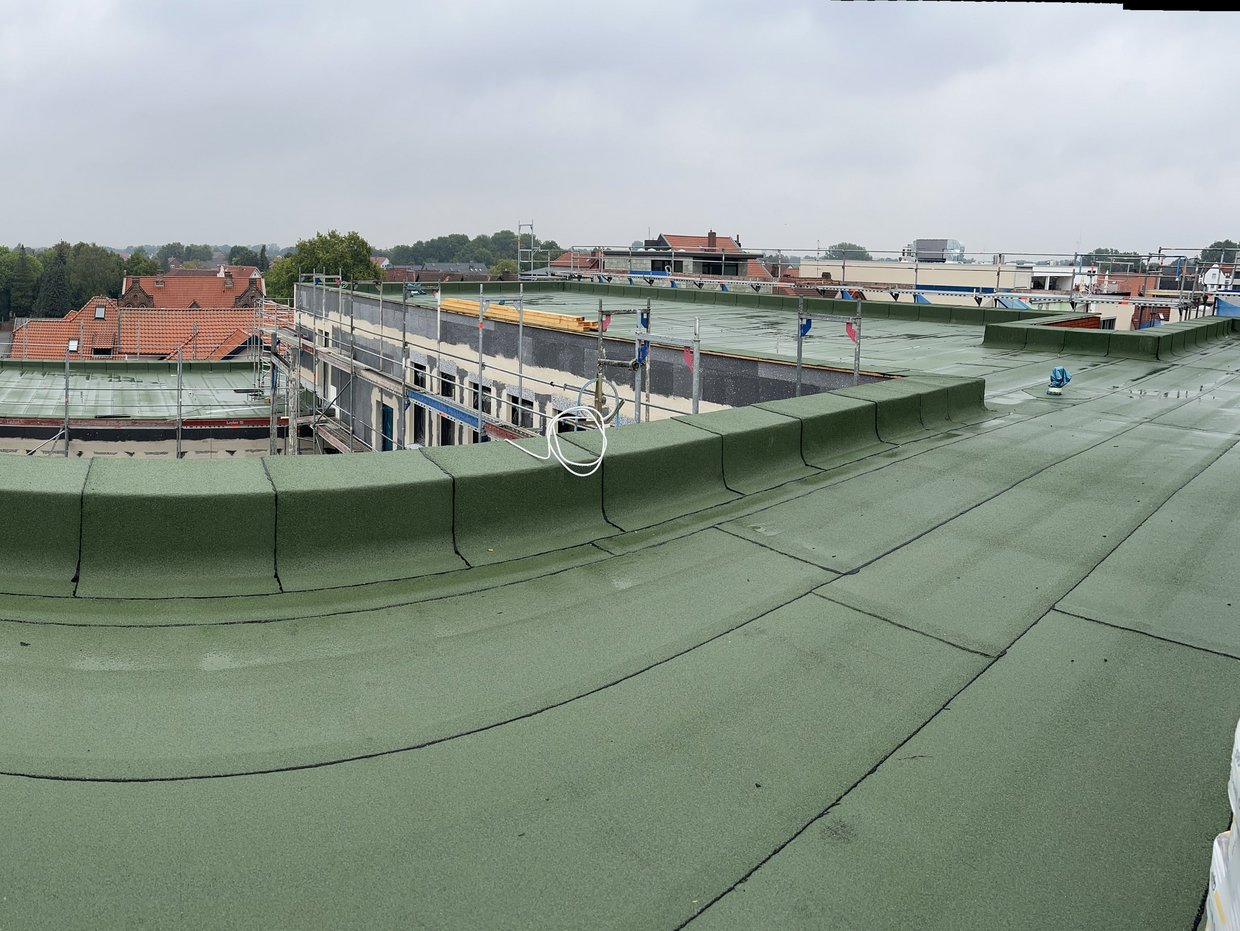
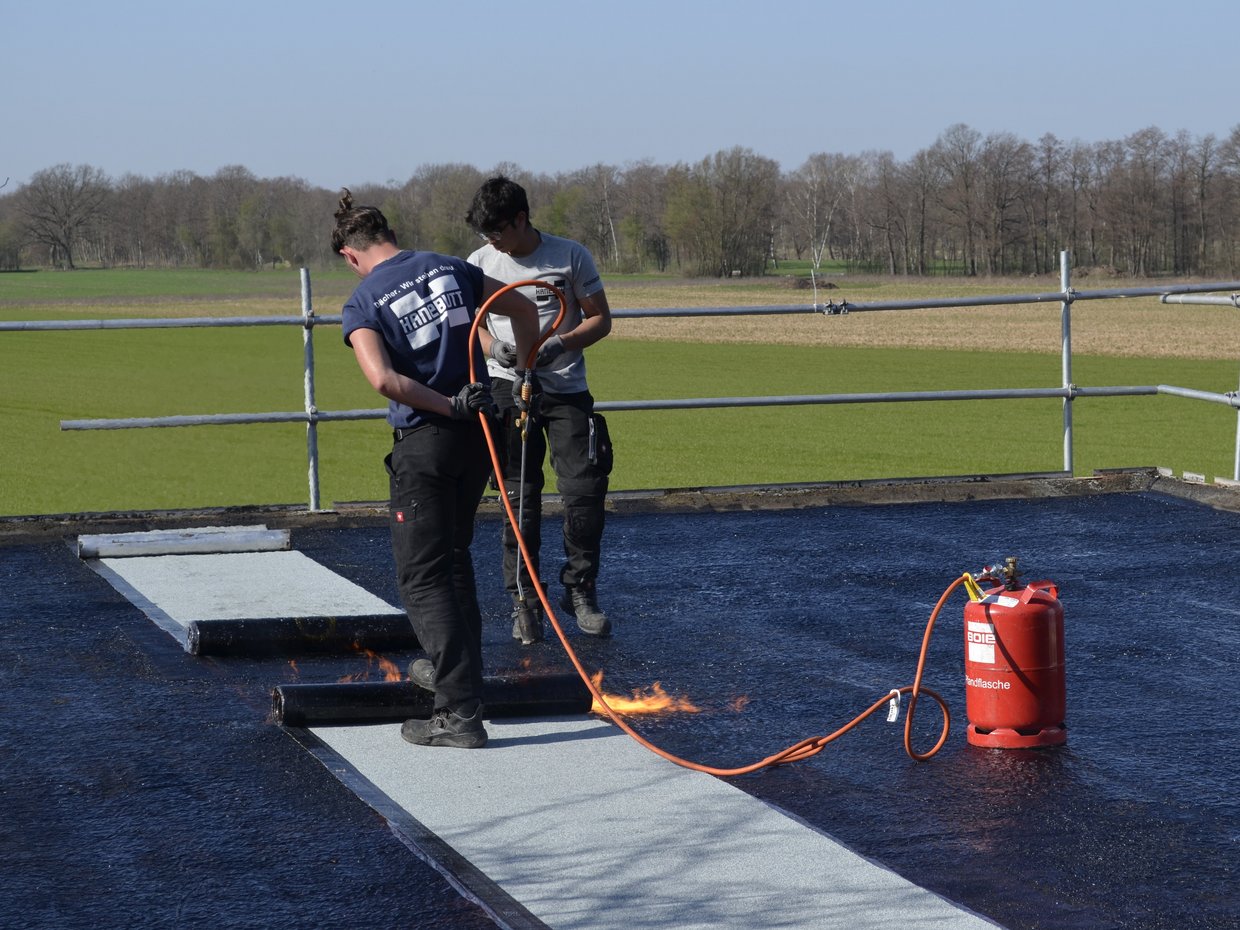
You receive a high quality solution for your project with a guarantee promise.
Hanebutt roofs, for a lifetime.
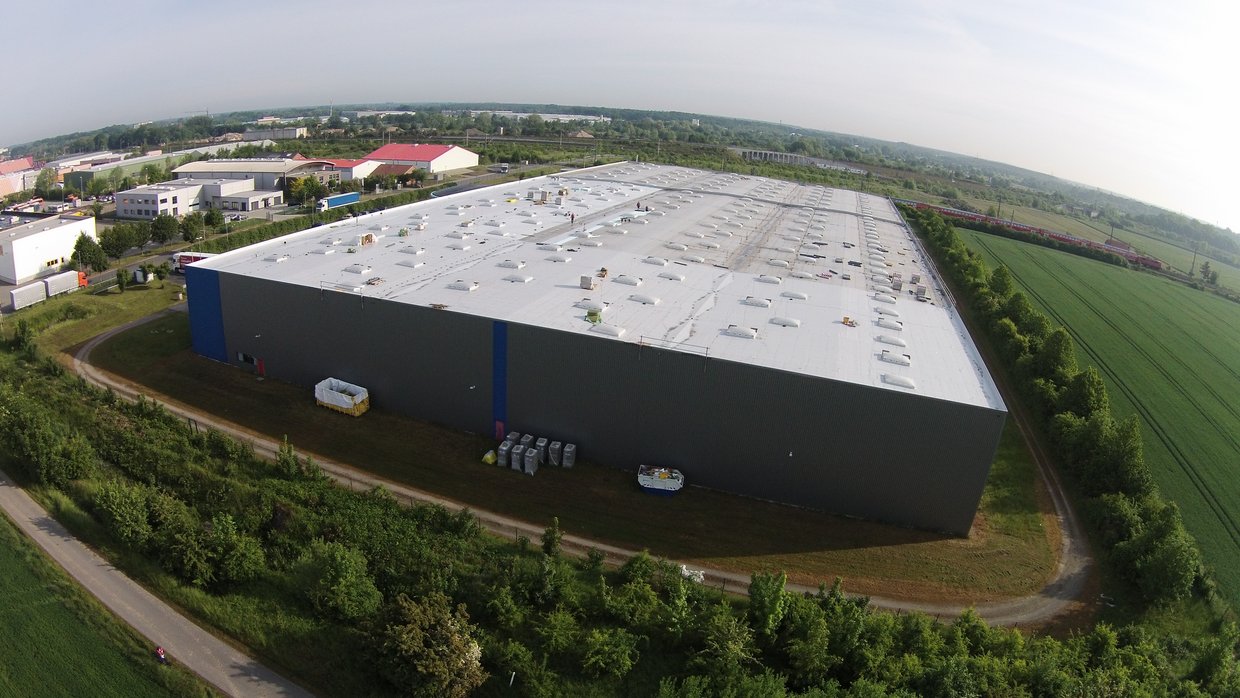
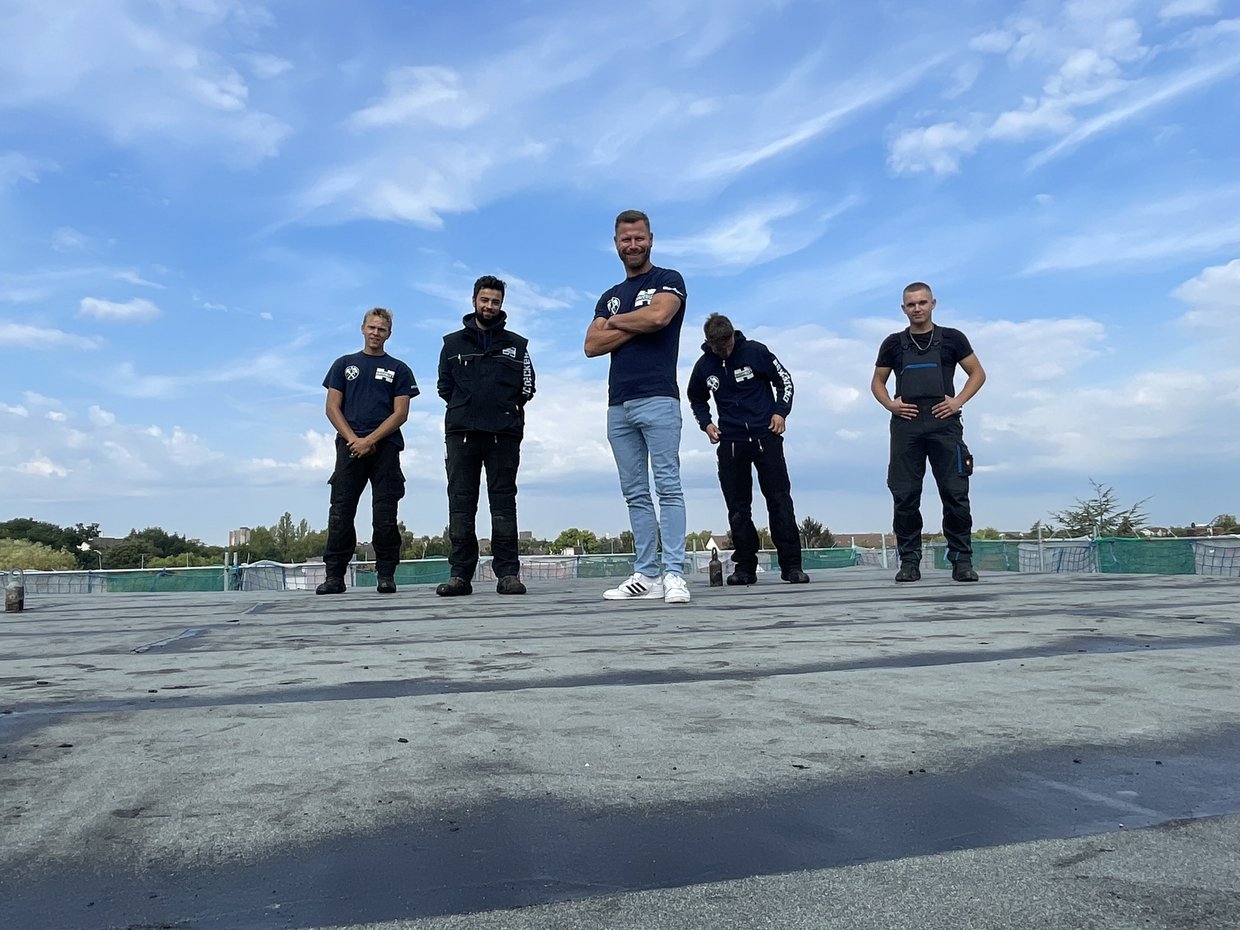
Roofs from Hanebutt
Flat roof
Keep the ball low or go high?
The basic prerequisite for finding the right type of roof is its use. While the decision on the type of roof for private and family homes may be predominantly in favour of pitched roofs, it often makes sense to opt for a flat roof in commercial buildings. Simply because it is less about aesthetics or weathering and more about optimising the use of space.
Flat roofs are timeless and functional. It's not without reason that they are the oldest type of roof and still very important today.
Flat roofs are particularly popular in the commercial sector due to their low construction costs and short construction time. They also have a favourable price-performance ratio.
Flat roofs mean roofs with an angle of less than 10°. The roof covering can be very varied here. Starting from an angle of 10° upwards, it is possible to cover the roof with roof tiles or to use concrete roof tiles. Otherwise, there are various other options for utilising a flat roof.
Flat roofs go back a long way in history and were already found on houses in ancient times. At that time covered with bitumen, today with other materials. If well sealed, nothing stood in the way of a roof terrace back then either. For climatic reasons, buildings with flat roofs are particularly suitable in arid - i.e. dry and drought-ridden - regions. Nowadays, however, they can be found everywhere, especially in large urban areas.
Therefore, flat roofs are very suitable for terraces or green areas and useful for rest, relaxation or during lunch breaks. Flat roofs are also ideal for adding storeys at a later date. A terrace construction is also very popular with flat roofs.
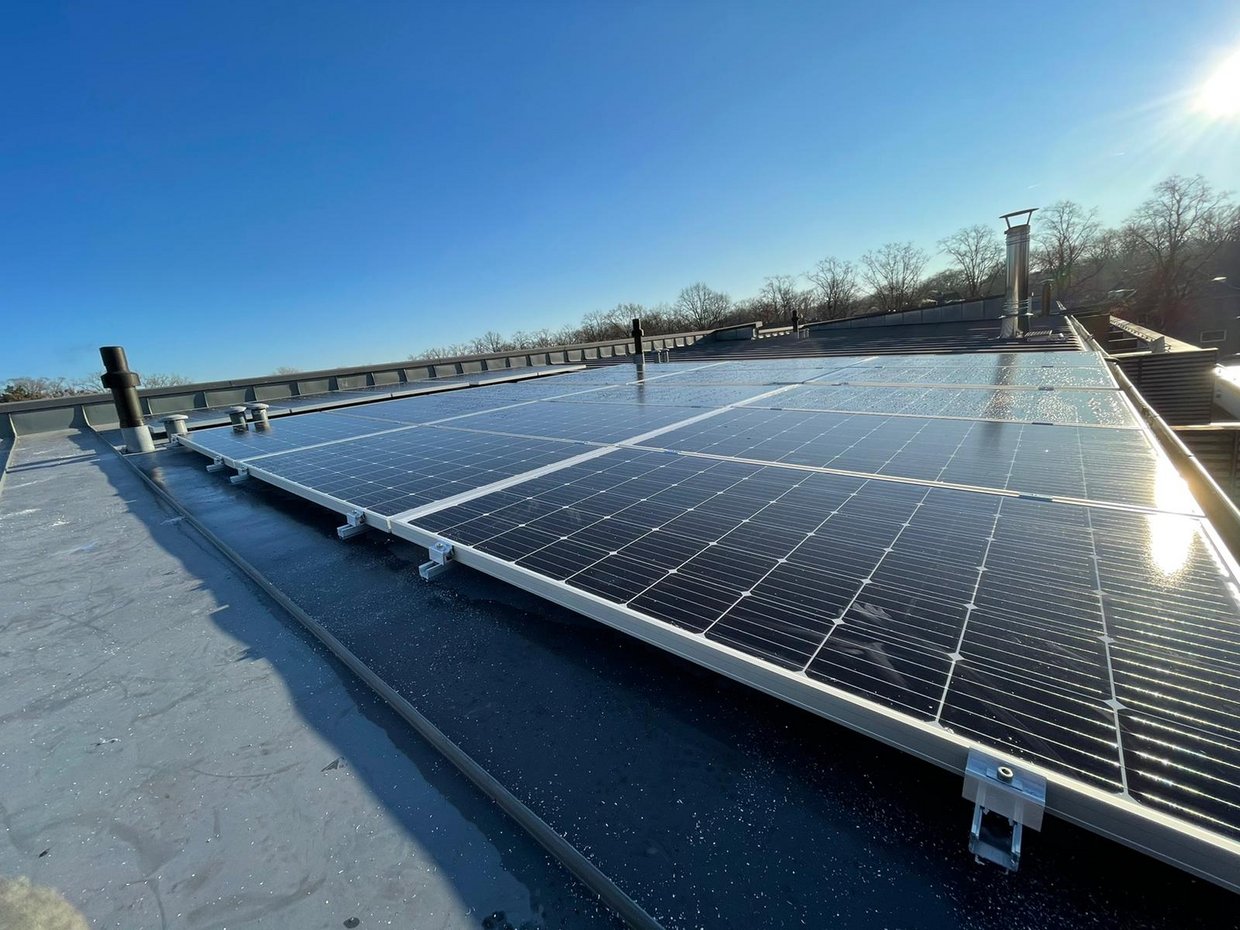
Complete photovoltaic systems for flat roofs
If active use of your roof does not appeal to you, this area can be alternatively put to perfect use by installing a PV system or other technical equipment. Especially in winter, when the sun's position is very low and the direct rays are rather shallow, flat roofs have a significantly higher light incidence.
PV systems can save a lot of energy supply costs. Integrated PV systems are now also available. These can also be installed in an upright position to capture the sun's rays in a favourable angle.
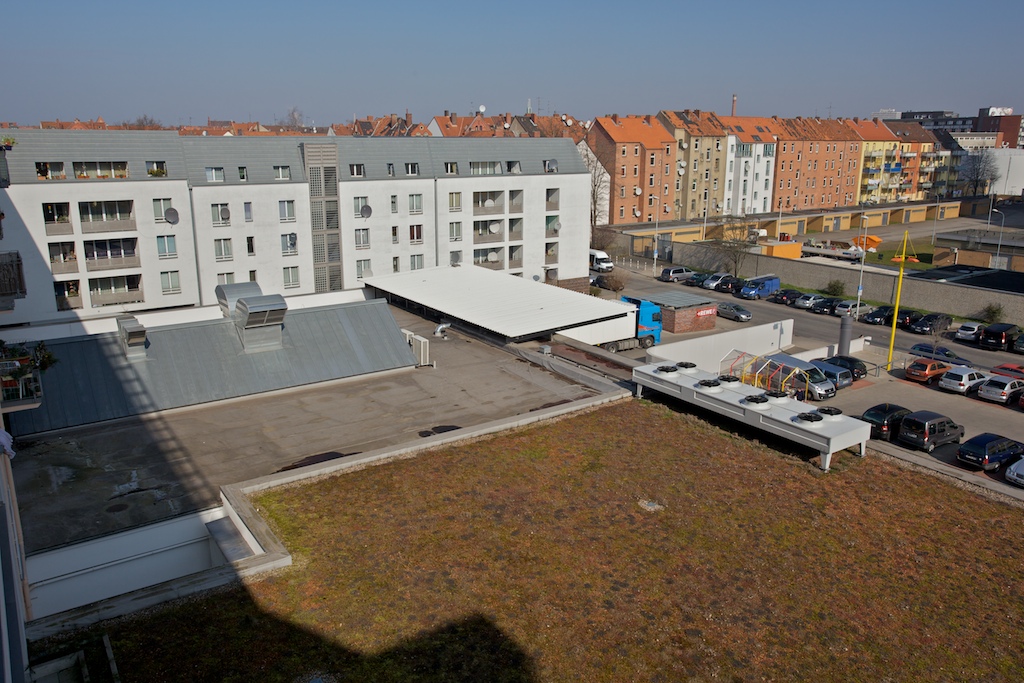
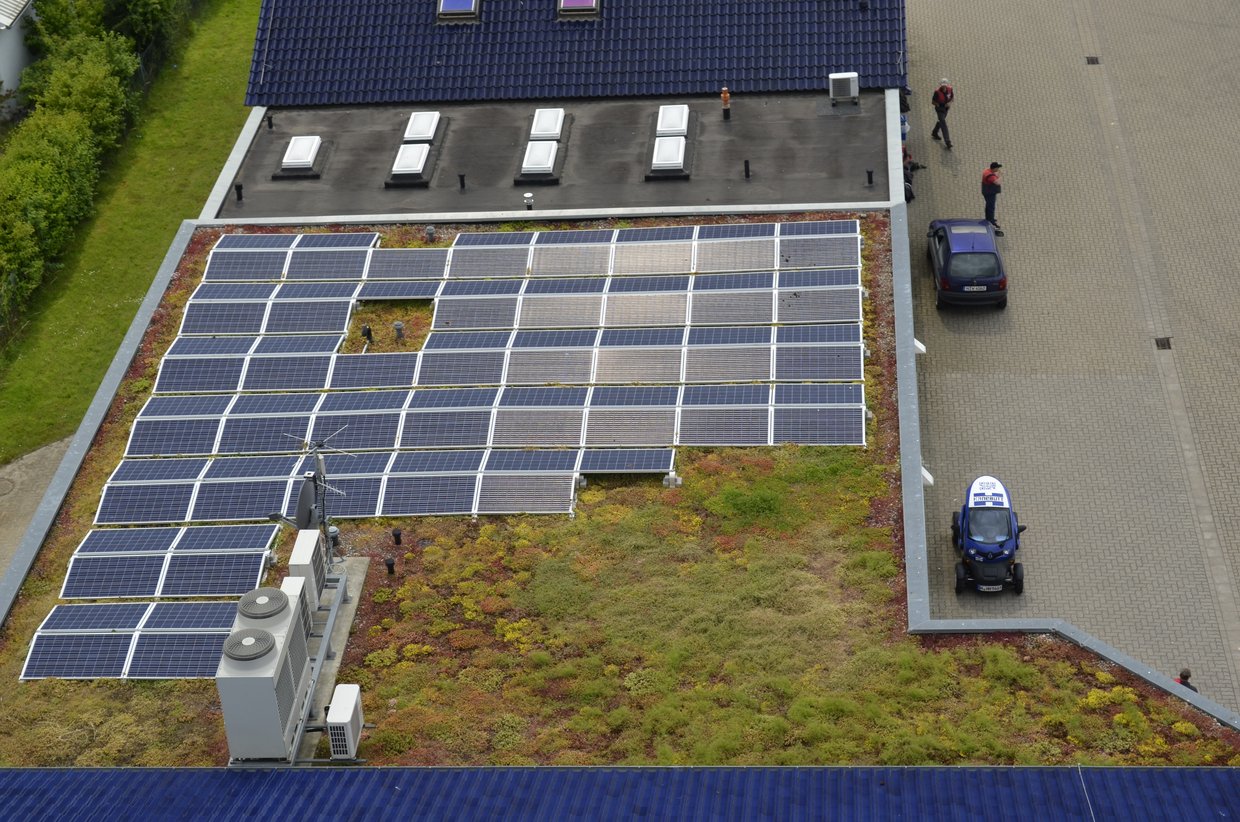
Roof extension for flat roofs
Roof extensions for flat roofs are much simpler than for other types of roof without requiring a great deal of effort. It is not necessary to replace the entire roof structure from the roof truss to the roof covering, but often it is sufficient to have a good seal at the respective joints. A storey can then be added on top.
Utilising the open space on flat roofs
Not only with a roof over your head does space mean free space. The roof can also be put to wonderful uses. Flat roofs, even more so than pitched roofs, can be transformed from a mere protective roof into a usable roof with little effort.
Enjoy your lunch break outdoors? Hold team after-work get-togethers or tend the garden together? You don't necessarily need a large plot of land for this, as you rarely have such, especially in cities. It's all possible on a flat roof.
Especially in the commercial sector, it is necessary to use every free space sensibly in order to get the most out of it. Garden areas that nobody uses, needing external gardeners, are not pertinent and yet it can be good to offer a place where employees can relax. And if the roof garden is not as popular as hoped for, the roof can be used for other purposes, such as the installation of PV systems to utilise solar energy. Because there can never be too much electricity.
As the owner of a building with a flat roof that is to be rented out, a roof terrace, a roof garden with a wonderful view or the use of sustainable electricity generation makes good advertisement for your property. The images we know from American TV series, with New York flats and New Year's Eve parties on the roof, certainly attract many people and invite them to get to know the building community without having to take up additional land for gardens or backyards.
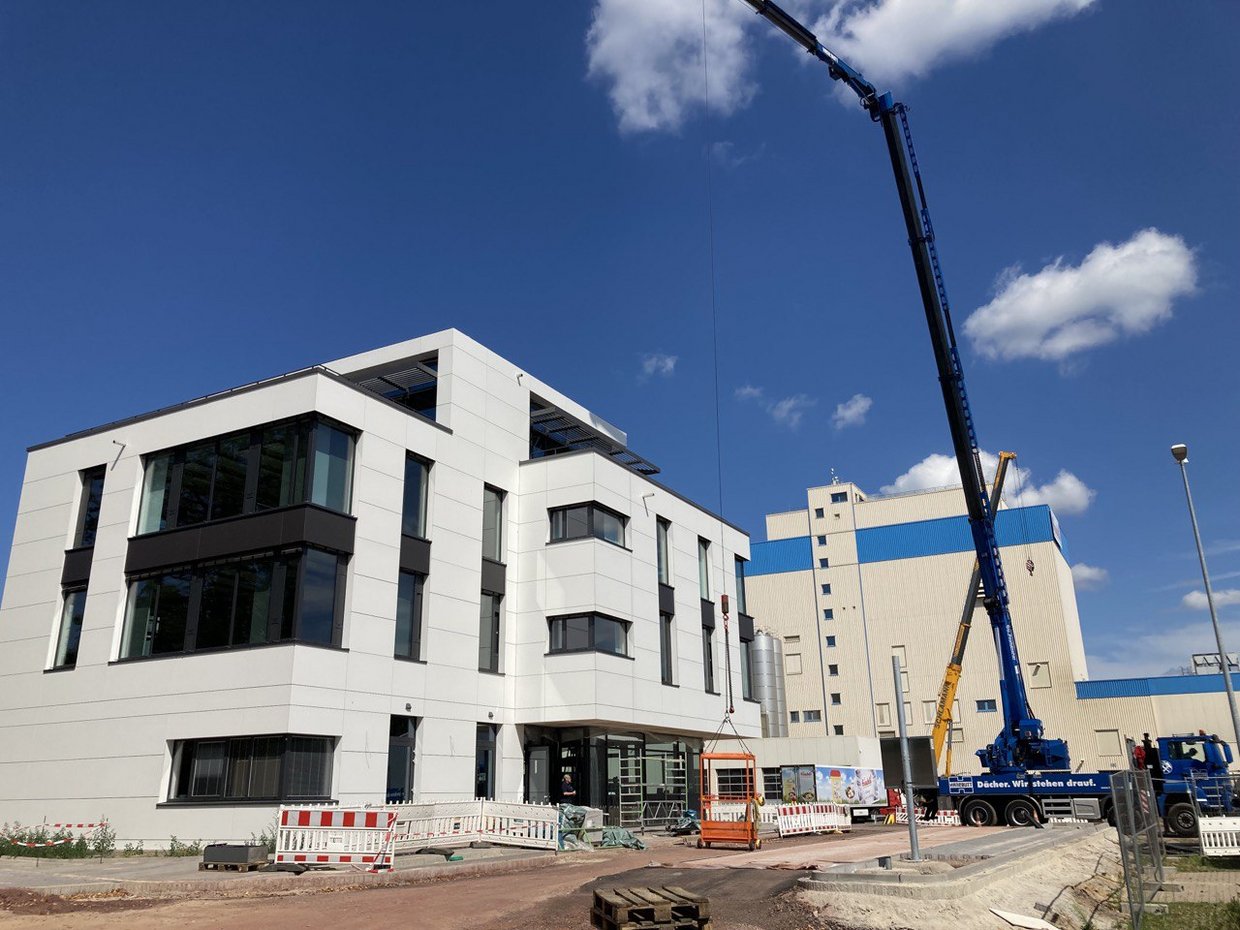
Room development
The flat surface also makes it relatively easy to change what doesn't work. A terrace can be turned into a garden with just a few cuts, the garden can be turned into an energy generation system, and the energy generation system can be turned into another storey on top.
Even if higher construction methods are not permitted on your chosen property, flat roofs offer optimum opportunities to develop more space at a lower height.
Drainage of a flat roof
If the pitch of the flat roof is very low, securing the water drainage is all important. Because even if good waterproofing promises not to leak moisture, puddles and water accumulation should be avoided. To this end, a slight gradient or a short path to drainage should always be ensured. If necessary, a suitably cut sloping thermal insulation can also do this.
On flat roofs without any gradient, the service life of the roof cladding is impaired by the unavoidable accumulation of rainwater, which is why a drainage system is of immense importance.
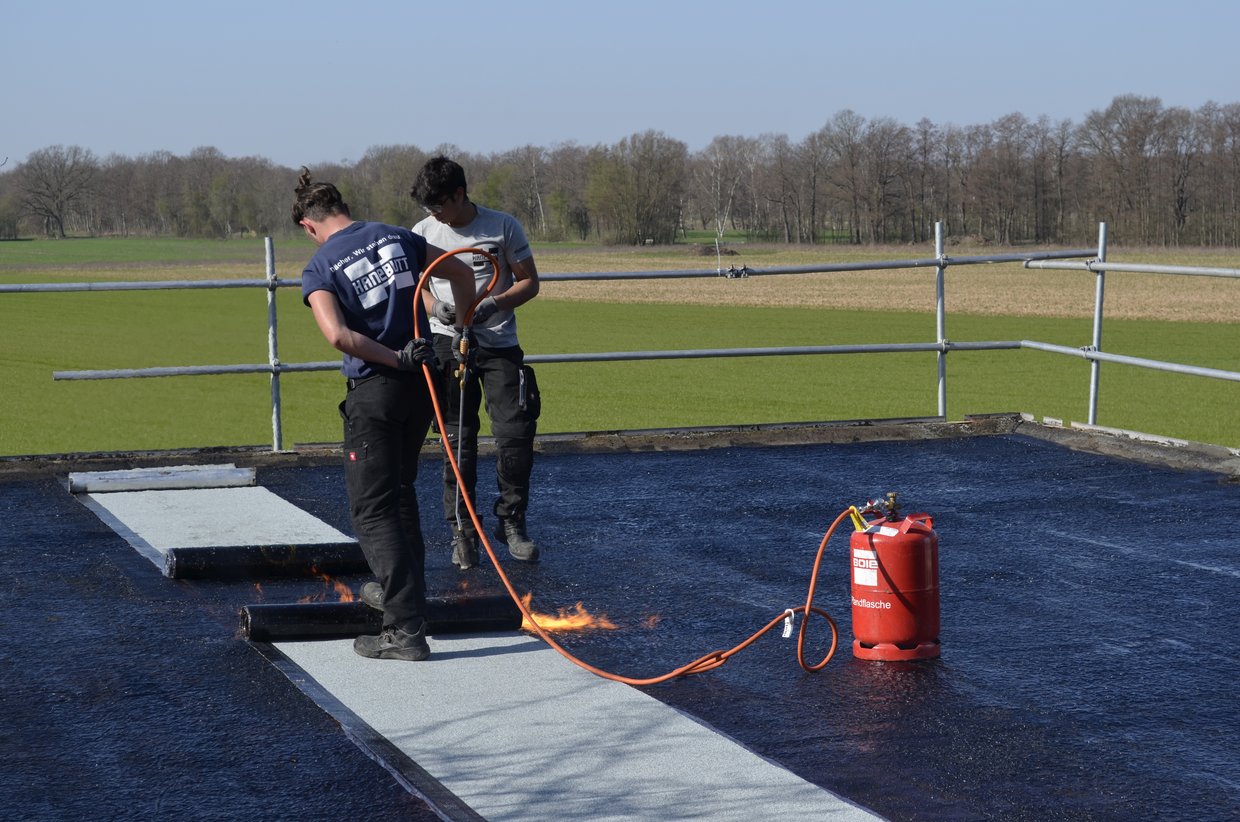
Waterproofing a flat roof
As simple as this image of change and adaptation may sound, a flat roof is not just a "lid" on the building. Unlike a gift box, but rather like a water bottle that should be waterproof and not leak, it must also be properly sealed to guarantee a long service life.
High standards of quality, workmanship and precision are required to ensure that the roof is watertight and durable.
Waterproofing is therefore one of the most important aspects of flat roof construction. Bitumen, synthetic or elastomer membranes are available for this purpose. Another part of the waterproofing is a layer of roofing felt. The waterproofing membranes are then laid with an overlap. The use of the respective materials or flat roof membranes therefore depends on the subsequent use of the roof surface.
For flat roofs, it is essential to check the roof surface for damage or cracks every year. Timely repairs can protect against massive and costly damage.
Flat roof structure
A flat roof basically consists of the following layers:
- several layers of gravel
- asphalt
- felt
But also:
- Rubber
- fibreglass
- synthetics
- and similar materials
can be used as coverings for flat roofs.
Roof construction for flat roofs
As with other roof types, insulation and ventilation are becoming increasingly important due to global warming, as insulation can ensure both a cool interior in summer and warm rooms in winter. This can save enormous energy costs and makes the roof more resistant and durable.

Warm roof
Warm roofs have a high insulating effect. Although there is no air layer, a compact sequence of layers supports the thermal insulation. The warm roof consists of a shell and a vapour barrier. The vapour barrier towards the inside of the room prevents moisture from penetrating the thermal insulation through water vapour in the room air. It is extremely important to use high-quality construction and modern building materials so that there is reliable resistance against persistent moisture.
The quality of the warm roof depends on the airtight installation of the vapour barrier and the impact resistance of the thermal insulation.
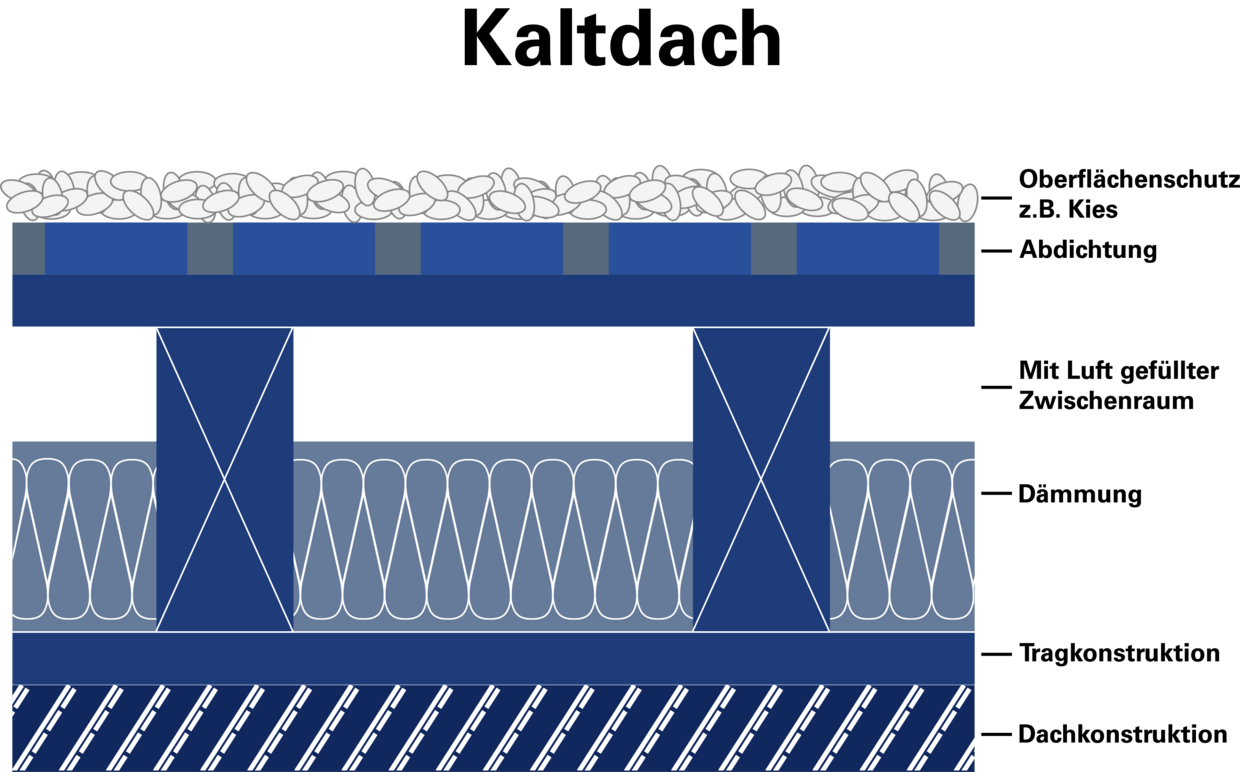
Cold roof
Compared to a warm roof, a cold roof has a double-skin structure. It also has a separate ventilation layer that is installed between the roof cladding, i.e. the upper sealing layer, and the externally ventilated roof space, the so-called insulation layer. Air can circulate freely in this layer and any moisture that has penetrated can be easily removed.
As a result, cold roofs provide better heat protection in summer than warm roofs.
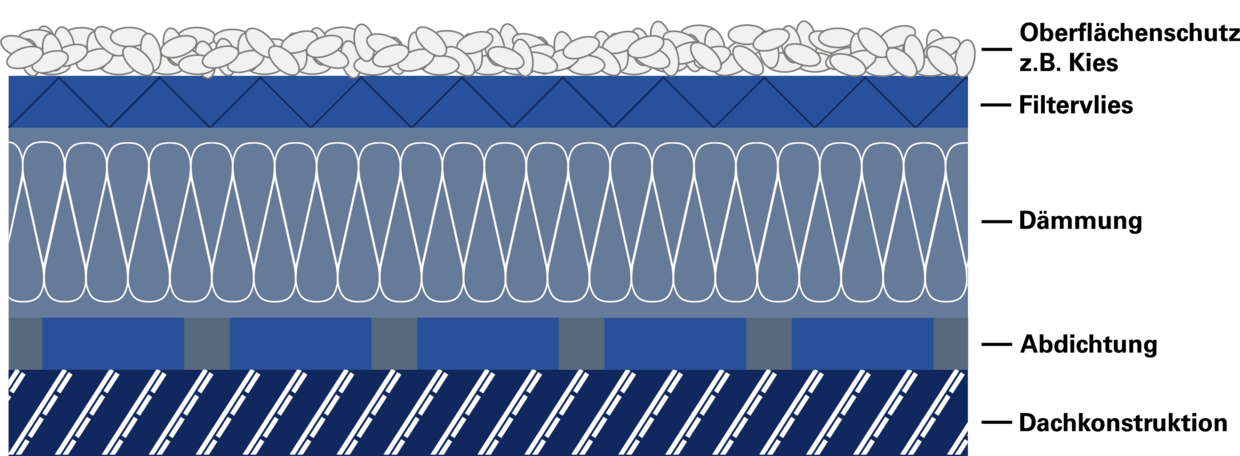
Inverted roof
With the so-called inverted roof, the thermal insulation is installed over the roof waterproofing. This protects it from the effects of the weather. The name of the inverted roof is derived from the reverse order of the layers compared to the warm roof.
The waterproofing is applied before thermal insulation, which means that only water-resistant material can be used as thermal insulation. The load-bearing layer consists of a timber or steel frame or a solid reinforced concrete or aerated concrete ceiling.
In summary, it must be emphasised once again that the development of diverse uses requires professional expertise such as that of Hanebutt.
FAQ
Usually, a reinforced concrete slab is used as the base. In addition, profiled sheets can also be laid.
For flat roofs with a pitch greater than 7 %, normal roof tiles or vapour checkers can also be considered for covering.
From a pitch of 5 %, it is possible to lay bitumen welding sheets. However, as the name suggests, these must be welded. A bitumen primer is also advisable.
As EPDM waterproofing membranes or EPDM films (ethylene propylene diene monomers) can be laid seamlessly, they are perfect for standard flat roofs, as any joint or seam favours waterlogging, moisture penetration and can lead to material damage. For this reason, a certain roof pitch must also be ensured for many seams.
If the roof surface is to be greened, a root protection barrier must be laid so that plants do not spread over the entire roof.
The materials used are decisive for the quality of the waterproofing. This in turn determines how long a flat roof will ultimately last.
As it is permanently exposed to the weather, UV radiation and, in some areas, considerable amounts of snow, a flat roof can require some upgrading or even renewal after just 15 years if the workmanship is not accurate. When done well, as we promise at Hanebutt, flat roofs generally last at least 20 to 30 years.
When renovating a flat roof, the entire roof should also be overhauled instead of patching small, individual areas.
However, with the use of high-quality materials, impeccable workmanship and regular maintenance and cleaning of the roof, this type of roof can last just as long as conventional pitched roofs.
The price of a flat roof depends on the size and the materials used. Both the costs and the service life of the flat roof vary depending on the waterproofing. If you save on the waterproofing, it is very likely that you will have to invest in considerable costs in just a few years due to water damage or other repairs.
A new flat roof that is both waterproofed and insulated costs around €75 to €200 per square metre. A renovation costs around €120 to €140 per square metre. For garages with less extensive insulation, you can expect to pay around €40 per square metre.
While grants or loans can be applied for from the KfW development bank if the new energy-saving regulations are complied with, additional skylight domes, other technical equipment, irrigation systems for green flat roofs or snow load alarm systems can increase the price.
These skylight domes are offered from €1,000 including installation. Snow load alarm systems are also of fundamental importance in some places. Such alarm systems send a text message as soon as the snow on the roof reaches a mass that could cause the roof to collapse.



